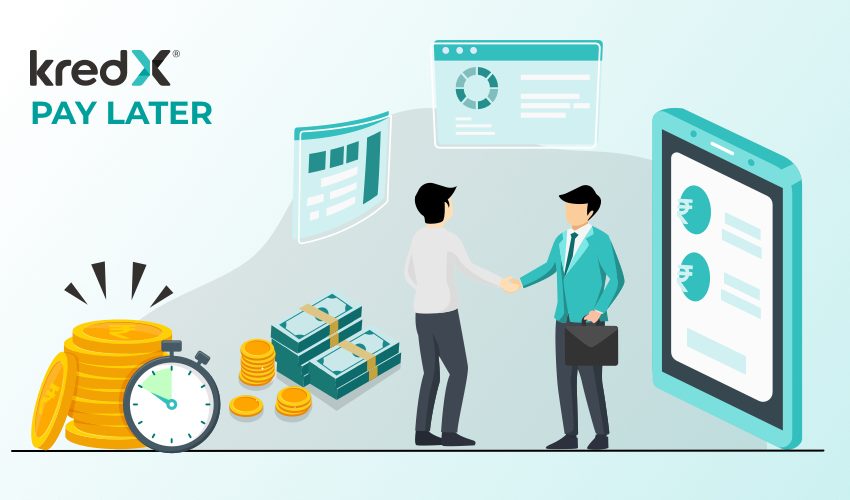
How Buy Now, Pay Later Is Transforming The Traditional B2B Channel Finance
BNPL (Buy Now, Pay Later) enables buyers to make up-front purchases without needing to pay at the moment. They can pay the cost later in installments. Additionally, it frees up customers from paying interest if they keep up with their timely payments.
Retailers, too, enjoy plenty of benefits such as increased conversion rates and higher average order values. These are great advantages for B2B organisations running with lower margins and higher costs of business. But, the question is will BNPL be able to cascade into traditional B2B channel finance and transform it?
Let’s find out.
How Can BNPL Provide Frictionless B2B Customer Service?
The seamless consumer experience that BNPL vendors provide to millions of buyers in B2C might be difficult to replicate in the B2B space. BNPL vendors need to provide reasonable credit limits for business-to-business purchases to achieve it. In addition, they need to offer credit card providers favorable terms to push buyers to do business with them. Simultaneously, they have to find a way to effortlessly incorporate into the brand and checkout experience of the supplier. It can significantly remove the friction in the customer experience. One of the considerable BNPL providers that can fulfill all these requirements is KredX. The fintech firm is working towards maximum adoption of BNPL in traditional B2B channel finance.
B2B Buy Now Pay Later is doable with the help of certain features of KredX Pay Later channel finance. For example, B2B can leverage the benefits of BNPL by transforming the models of traditional credit card pricing. Further, decreasing the cost of interchange can also help in the process. Both of these actions can bring big value to the sector by lowering the retail prices and costs for vendors and enhancing payment efficiencies.
However, to achieve this, several steps need to be taken:
Scaling Up Approvals By Outsourcing Underwriting
The existing process of credit approvals AKA traditional B2B channel finance is outdated. Though the majority of industries have adopted digital transformation, B2Bs’ credit approvals are still manual. Thus, it makes the whole process time-consuming. It causes suppliers to deal with slower customer onboarding and makes the buyer ordering process sluggish.
In this scenario, collecting necessary data for credit checks can easily take several days and weeks. A longer credit check process drains the company’s resources and threatens sales. Due to these reasons, lenders or supplier organisations might partner with modern B2B technology organisations. This partnership can help them accelerate and simplify the underwriting process of the entire credit check. Further, suppliers can accelerate cash and reduce costs by shifting to an alternate lending model instead of a traditional credit card.
Using B2B Channel Finance To Disrupt The Credit Card
Prevalence of more collection risk causes more cost, also, before the disruption of the current credit card process, it needs to be cleared who’ll take responsibility for collections when there’s a case of non-payment. However, if suppliers push collections to providers to prevent this risk, the lenders can charge a premium. Premiums might be less expensive than letting the banks that issued the credit card take the risk. However, if that’s not the case, then large B2B suppliers can gain incentives for implementing BNPL at a higher scale. However, it is difficult to line up lenders and manage their rate offerings to underwrite risk manners.
KredX Pay Later model outsourcing underwriting uses new technology to reduce the complexity of this process. For example, automation, ML-powered predictions, and fast bureau data. These can help in making informed credit decisions. It will impact top-line revenue and buying experience positively. Customers will feel encouraged to collaborate with brands more for business.
Credit Integration Into The B2B Buying Experience
Friction in the seamless B2B buying experience will reduce the rate of conversion. Thus, the dependence of BNPL on 3rd-party credit programs can hinder the model from performing its best in B2B. Its integration into conventional supplier-side trade credit programs is needed to make it work. Due to this, suppliers can accelerate cash without lowering their margin when buyers sign up. In addition, buyers can also gain better financing than offered by cards.
Though, there would be some challenges to achieving it. For example, it wouldn’t work on channels that only support the concept of direct checkout. Also, suppliers can face checkout abandonment if the credit process is not streamlined properly. If buyers face difficulties signing up, they are more likely not to continue with the purchase.
In this scenario, KredX with the help of technology can help in mitigating some of these risks. Online tools, including automated credit apps, can accelerate B2B payments and transform the credit process. Such technologies in place can deliver the same level of convenience and speed to B2B buyers that B2C buyers enjoy. A seamless buyer experience will increase conversion. Also, they let B2B buyers establish good credit along with their channel finance suppliers.
Conclusion
There’s been a buzz about BNPL potentially cascading into B2B. However, vendors seeking such disruption need to consider many aspects that they’ll have to change. By introducing KredX to their existing payment system, half of their stress can go away. With the BNPL service by Kredx, many problems could be resolved for both B2B suppliers and buyers. Furthermore, this fintech service can compel card issuers to provide improved rates to buyers to sustain the business. It can make them pair credit lines with different settlement forms to gain working capital benefits.
It’s hard to tell the exact future of this transformation. But, it’s notable to see the journey of the B2B payments landscape in the last 20 years. The sector is experiencing an evolution by harnessing new technologies. BNPL adoption can become an important step to proceed with this transformation.



